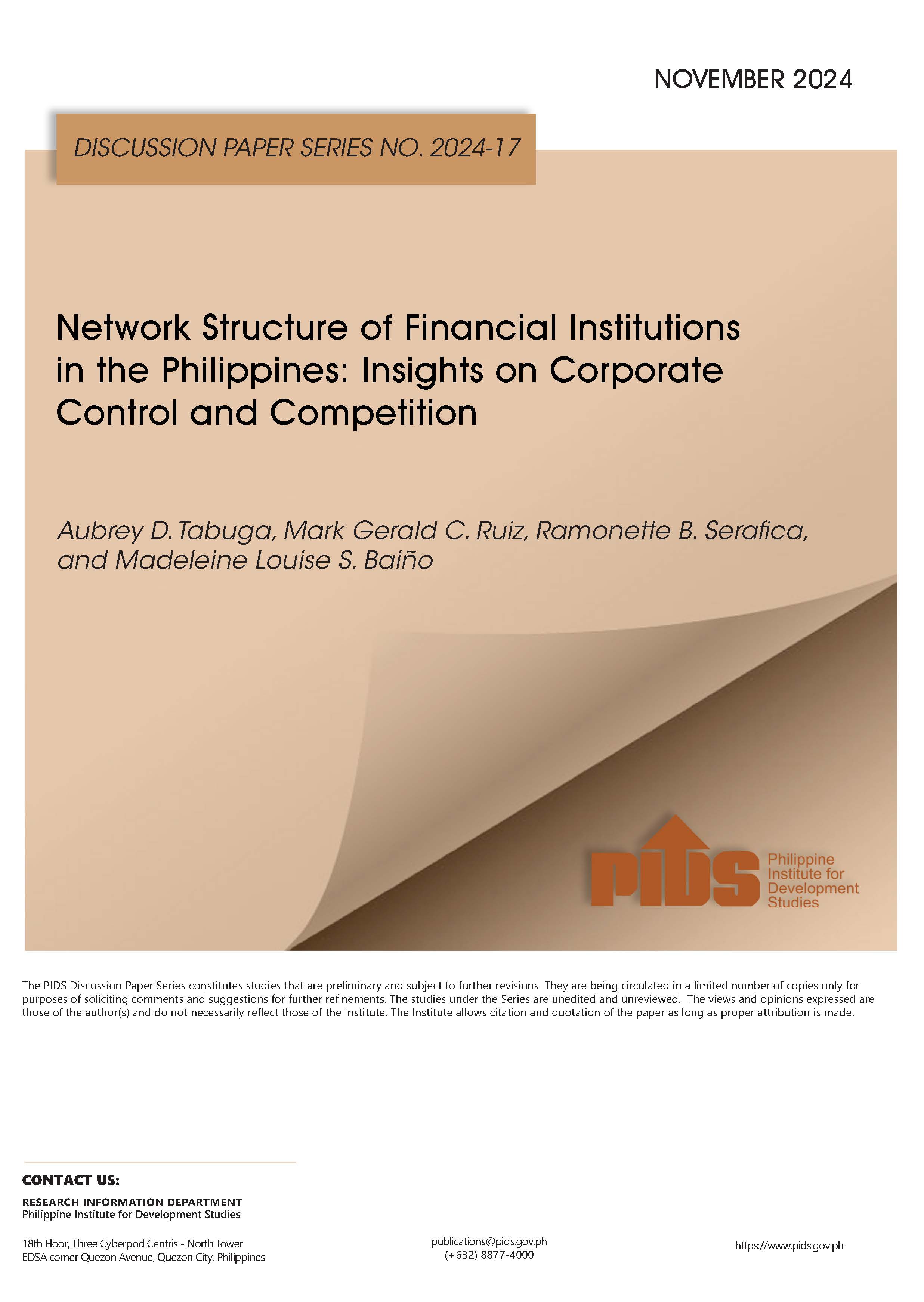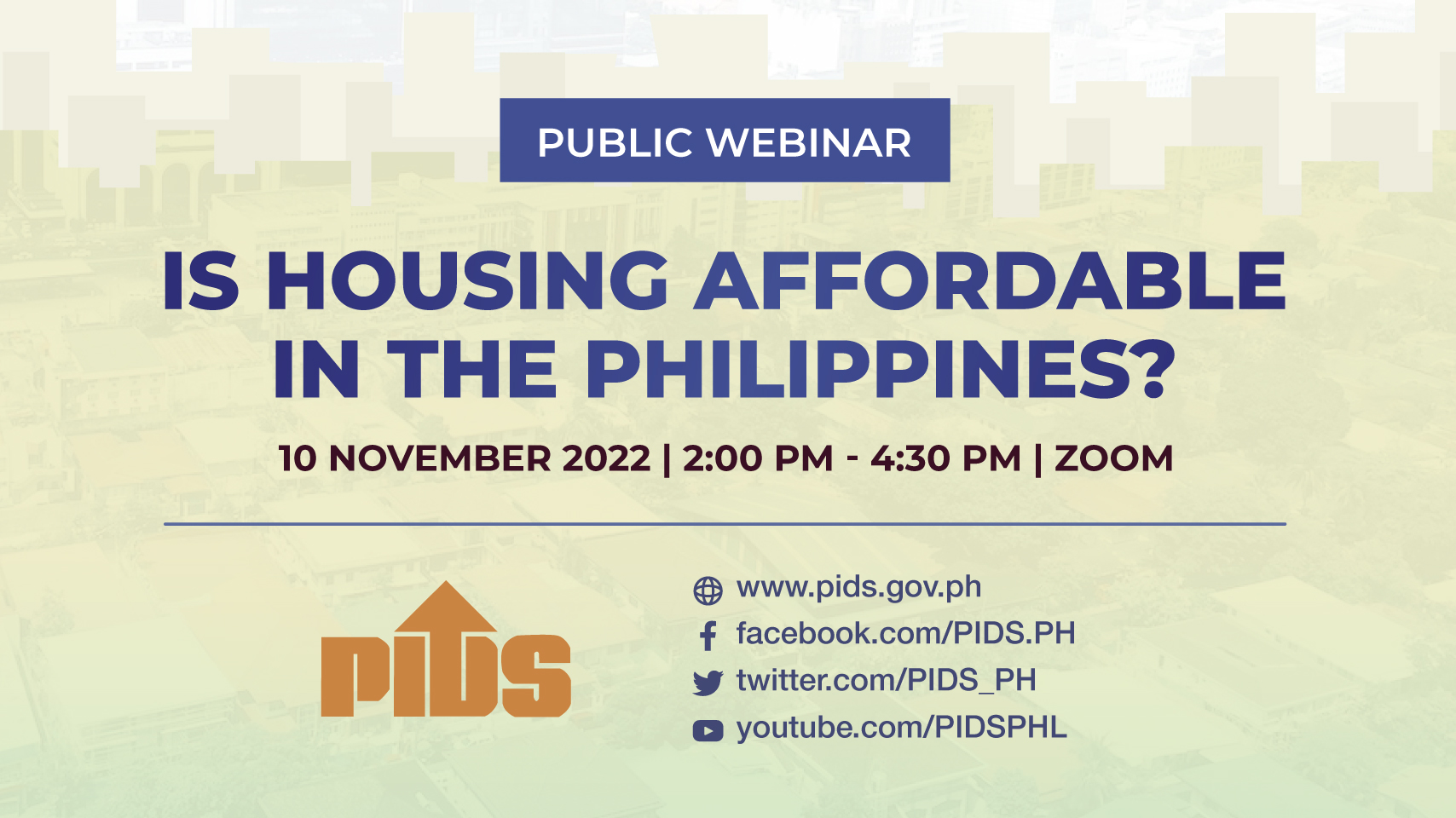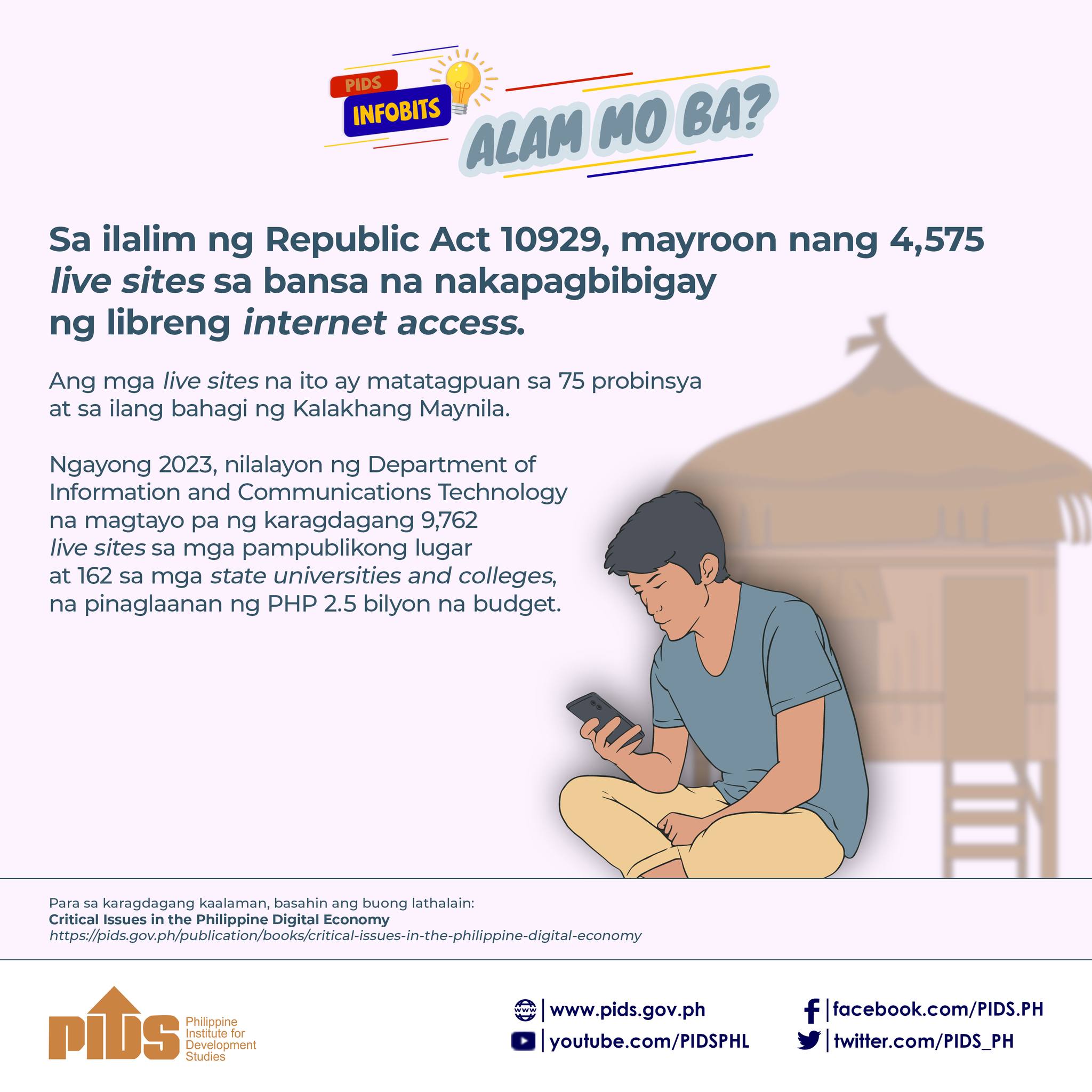A POLICY paper by the Philippine Institute for Development Studies (PIDS) is calling for the creation of a more favorable environment for housing finance in the country, as well as the adoption of appropriate policies and mechanisms to correct housing market dysfunctions.
One of the underlying issues with housing policies in the Philippines, for instance, is the traditional perception that a housing finance system is based primarily on the provision of government subsidies, resulting in a highly-segmented and unsustainable program that does not benefit those who deserve it most.
PIDS senior research fellow Dr. Marife Ballesteros noted in her latest study on urban housing subsidies that, despite policy changes through the years, the public sector housing program still does not address the problems on scale.
Ballesteros explained that subsidies for housing programs, whether through upfront grants, government direct funding, low interest mortgages, tax exemptions or underpriced risk insurance, could have been put into more efficient use by the government.
"Overall, direct subsidy to the low-income housing sector has been limited,” said Ballesteros, adding that in an effort to reduce losses from financial transactions, government has further restricted financing to the low-income sector through lower exposure of funders and the higher loan ceilings on socialized and low-income packages.
Fiscal costs greater concern
Ballesteros stressed, however, that an even greater concern than subsidy flows are the fiscal costs associated with losses incurred by government financial institutions (GFIs).
She noted that in the mid ‘90s, the main administrator of government-subsidized housing finance programs, the National Home Mortgage Finance Corporation or NHMFC, was considered technically insolvent and irreversibly illiquid.
"The corporation incurred net losses of P64 million in 1993, which increased six-fold by end of 1995 to P340 million. The fiscal impact of these losses was huge,” Ballesteros said.
Problems with government housing finance persist, with the Government Service Insurance System (GSIS) putting on hold its housing loan program in 2011 due to total unpaid loans of P11 billion for 17,000 house-and-lot packages nationwide.
It had been providing housing loans since 1954, previously to GSIS members only but later began extending loans to developers.
The institution eventually went into real estate development, buying land and building houses and selling these as house-and-lot packages.
GSIS did not have adequate manpower to support its various financing activities, however, which resulted in its failure to collect payments.
As of mid-2014, GSIS reported that its housing loan remedial and restructuring program had only restructured about P1.5 billion worth of accounts covering 3,000 borrowers.
Ballesteros said that, moving forward, more effective institutional and policy changes have to be made.
Subsidy interventions in the financial system, for instance, should be focused on low- to middle-income households, or those who are able to fulfill obligations resulting from small loans.
Subsidy can be provided through a point system that rewards the need for housing and savings effort.
She added that government should also avoid large potential future fiscal liabilities such as unfunded pension liabilities or bailouts of failed housing finance institutions.
A 2011 study by Prof. Toby Monsod of the University of the Philippines School of Economics also found that subsidies, apart from being implicit, have been highly regressive.
The Monsod study pointed out that it was the higher-income borrowers that benefited most from the Pag-IBIG Fund’s subsidies and guarantees, the costs of which were effectively borne by Pag-IBIG’s lower-income, self-employed member-savers.
These lower-income members do not qualify for housing loans, and receive lower returns on their mandatory contributions because of interest subsidies and default leakages.//












